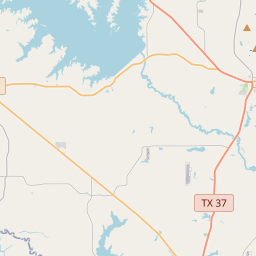James Stephen Hogg
Historical marker location:






(March 24, 1851-March 3, 1906) Texas statesman whose nationally-acclaimed public career began at this site. The third son of Gen. Joseph L. and Lucanda (McMath) Hogg was born near Rusk. Orphaned during troubled Civil War era, he began at age 14 to earn his own way as a farmhand, clerk, printer's devil, typesetter, country editor. At 22, he was elected Justice of the Peace, Precinct 1, and headed Commissioners Court of Wood County, 1874-75. He was admitted to the bar in 1875 and soon held higher offices: county attorney (1879-81), district attorney (1881-85), Texas Attorney General, (1887-90). Inaugurated on Jan. 20, 1891, he was the first native Texan to become Governor of the state.
He championed the common people. An intellectual and physical giant, personally fearless, he saw Texas as victim of Wall Street greed, and corrected many injustices. To equalize business opportunities among great and small, he led in creating Texas Railroad Commission, hailed as a model throughout the world.
Public office left him financially insecure. Later came wealth, which has been invested by his heirs in Texas mental health and culture. His wife was Sallie Stinson of Wood County. Their children -- Will, Ima, Mike and Tom -- were all philanthropists. (1971)
As one of the most visible programs of the Texas Historical Commission (THC), historical markers commemorate diverse topics in Texas history, including: the history and architecture of houses, commercial and public buildings, religious congregations, and military sites; events that changed the course of local and state history; and individuals who have made lasting contributions to the state, community organizations, and businesses.
Texas was once a part of Mexico but gained independence in 1836 after a famous battle at the Alamo.
In the early 1800s, the region attracted settlers from the United States who were drawn to the lush forests and abundant resources. The first permanent European-American settlement was established in 1846, and it was named Quitman after John A. Quitman, a prominent politician of that time.
During the Civil War, Wood County played a significant role in supporting the Confederacy. Many residents enlisted in the Confederate Army, and the area became a center for military recruitment and training. After the war, the county suffered economically, but with the introduction of the railroad in the late 19th century, the economy began to recover.
Wood County's economy primarily relied on agriculture, with the growth of cotton, corn, and timber industries. The establishment of sawmills and the development of the timber industry brought prosperity to the area. In the early 20th century, the discovery of oil and gas reserves further fueled the county's economic development.
Today, Wood County continues to be an important agricultural and industrial center in Texas. The county's history is evident in its charming small towns, historic sites, and natural beauty. The strong sense of community and appreciation for the region's heritage are still evident today, making Wood County a vibrant and inviting place to visit or live.
Wood County Timeline
This timeline provides a condensed summary of the historical journey of Wood County, Texas.
- 1850: Wood County is established by the Texas legislature.
- 1852: The first courthouse in Wood County is built in Quitman.
- 1860: The population of Wood County reaches 4,867.
- 1875: The railroad reaches Wood County, boosting economic growth.
- 1895: The county seat is moved from Quitman to Mineola.
- 1920: The population of Wood County peaks at 19,109.
- 1930: The Great Depression hits Wood County, causing economic hardship.
- 1958: Lake Holbrook is completed, providing a recreational area for residents.
- 1970: Wood County's population decreases to 12,230.
- 1983: Holly Lake Ranch, a gated residential community, is established in Wood County.
- 2000: The population of Wood County surpasses 37,000.
- 2019: Wood County experiences steady growth and continues to be a thriving community.